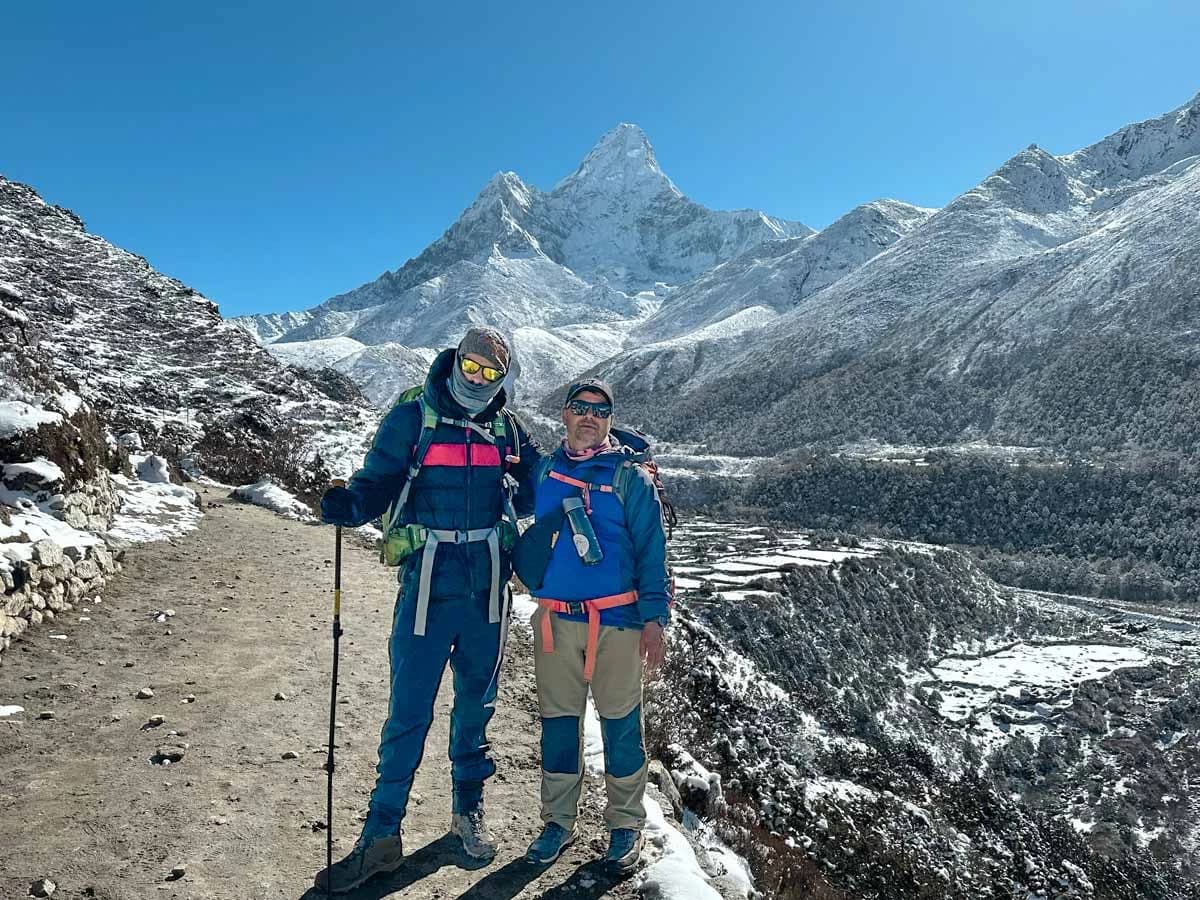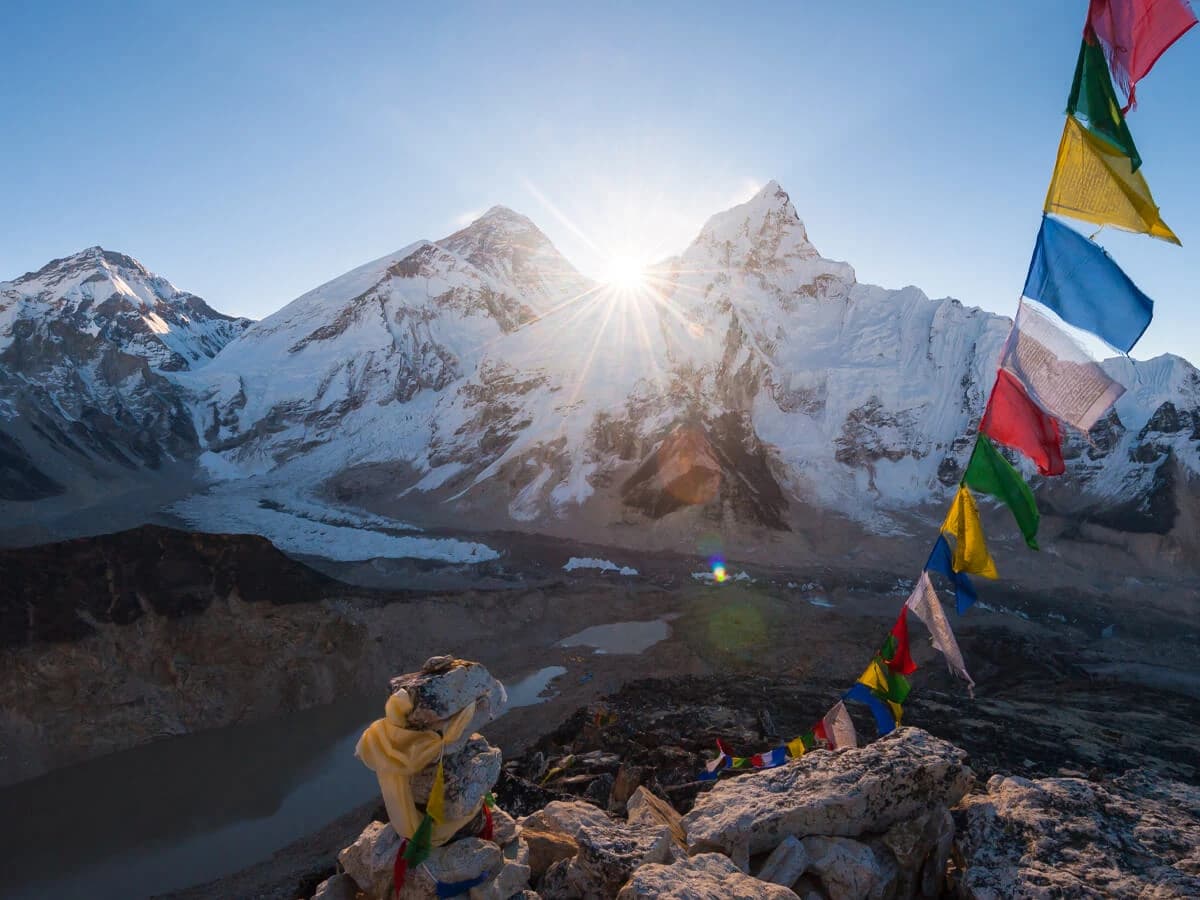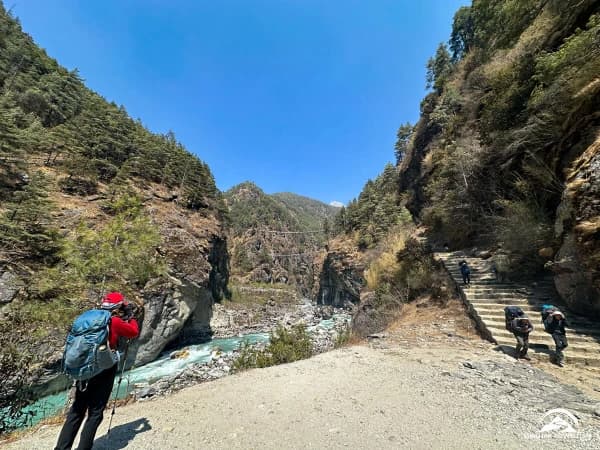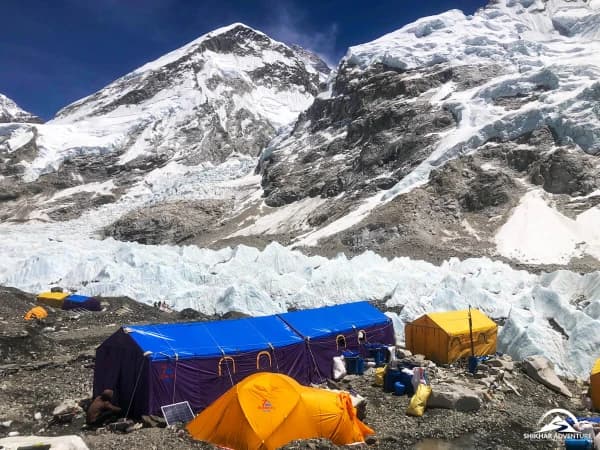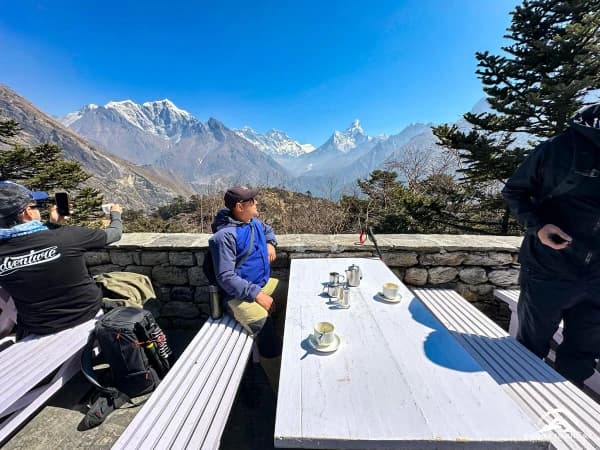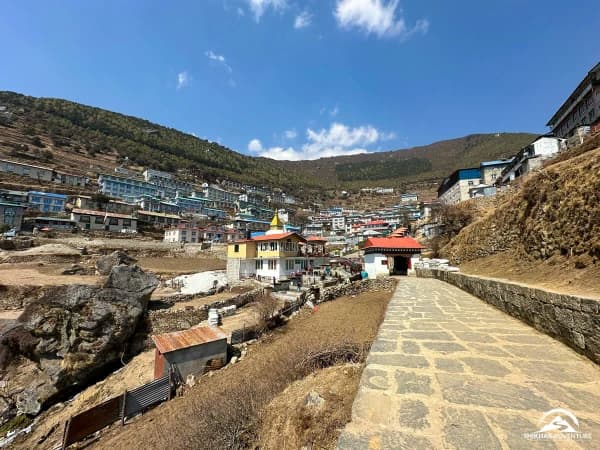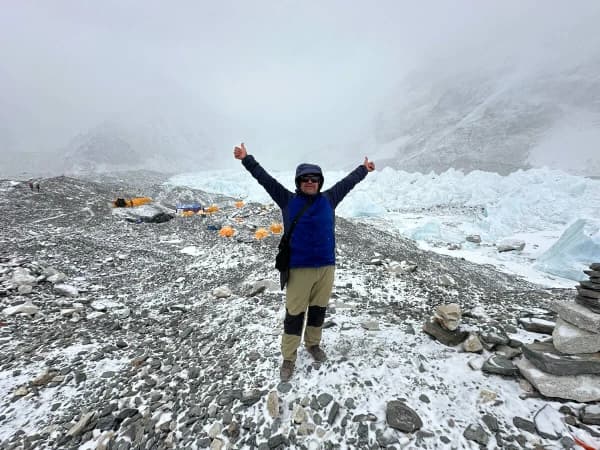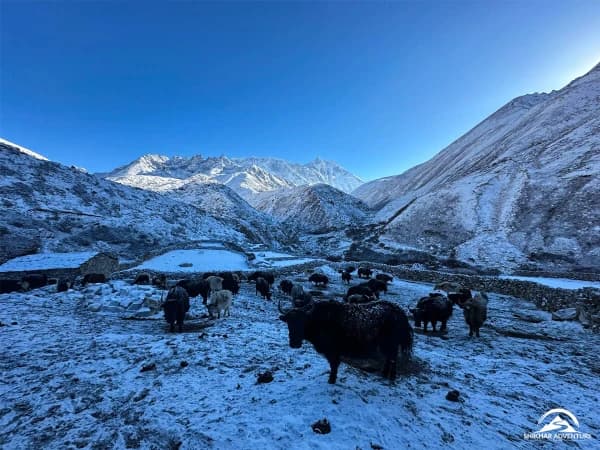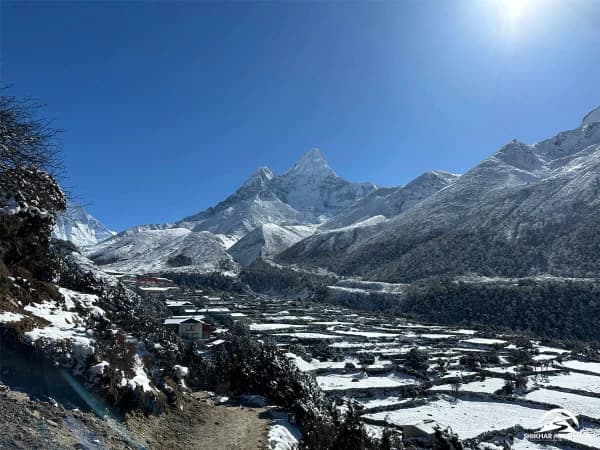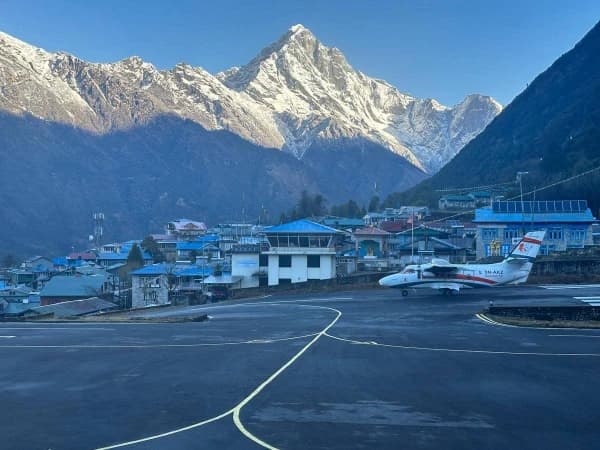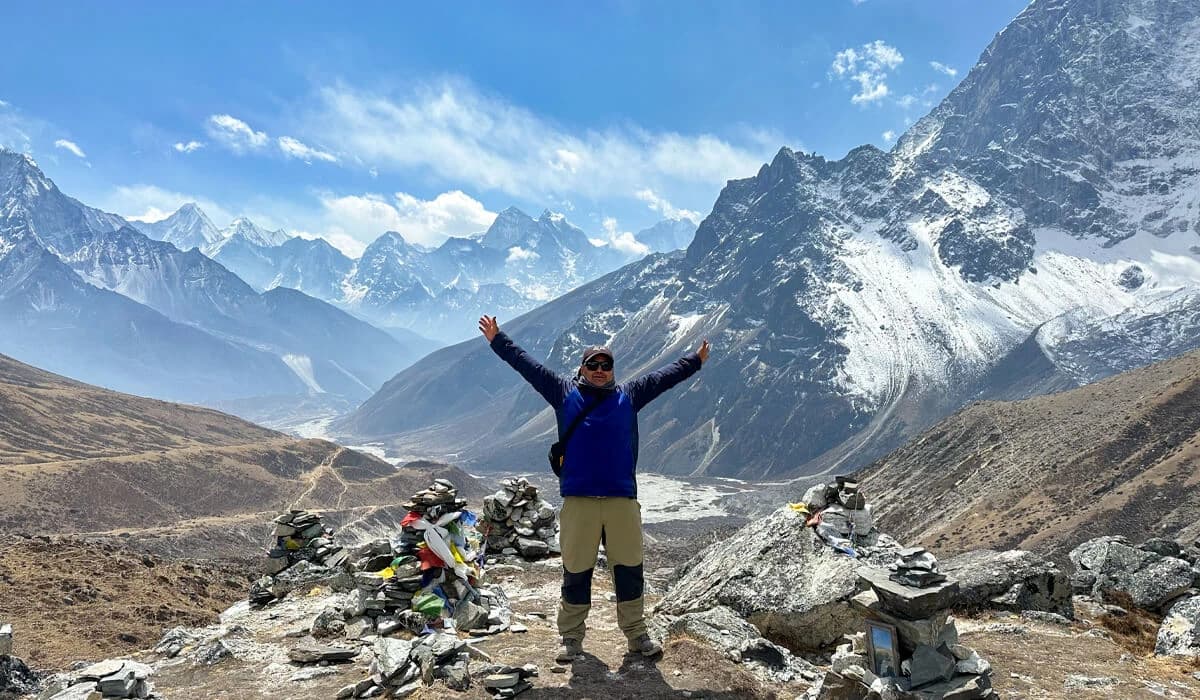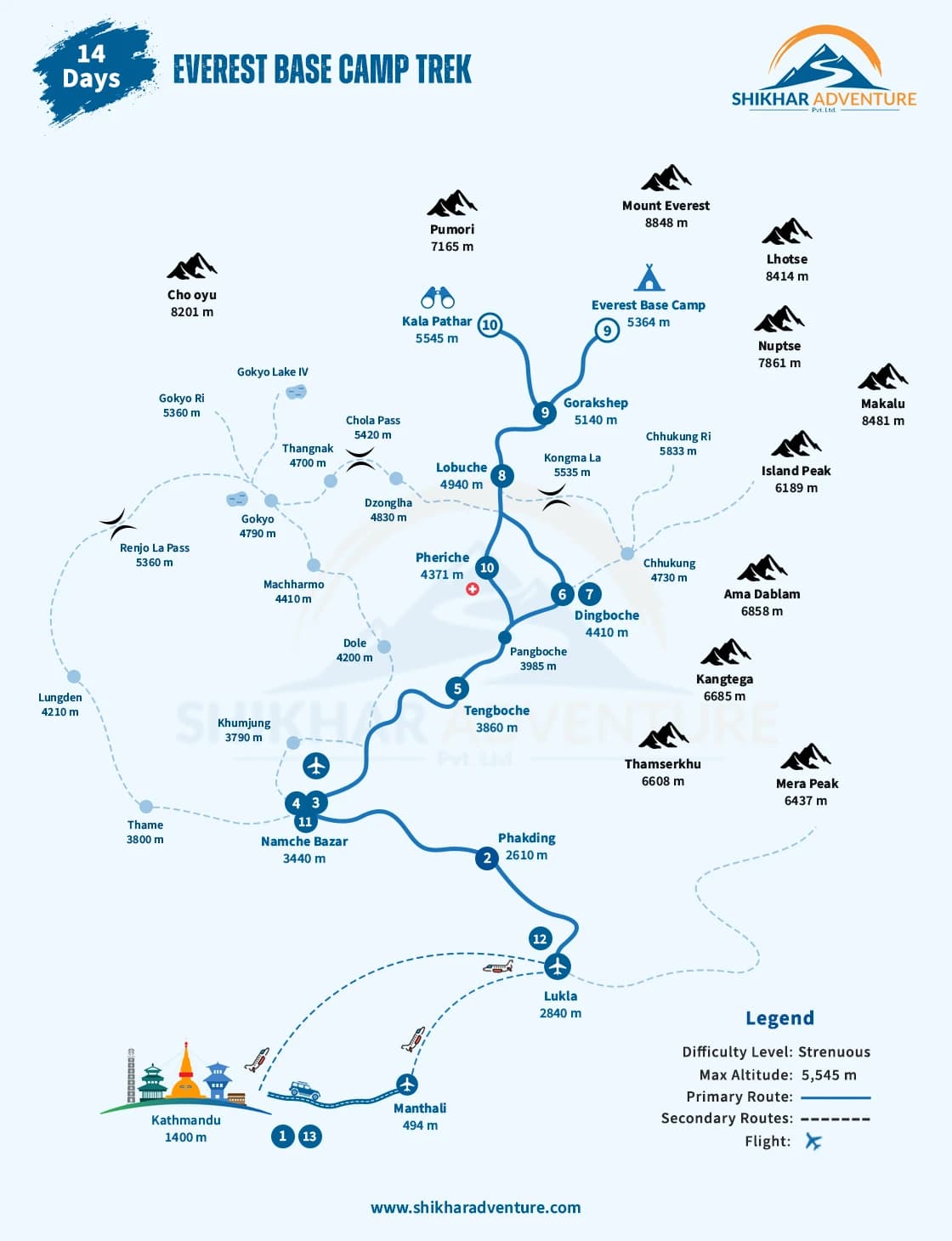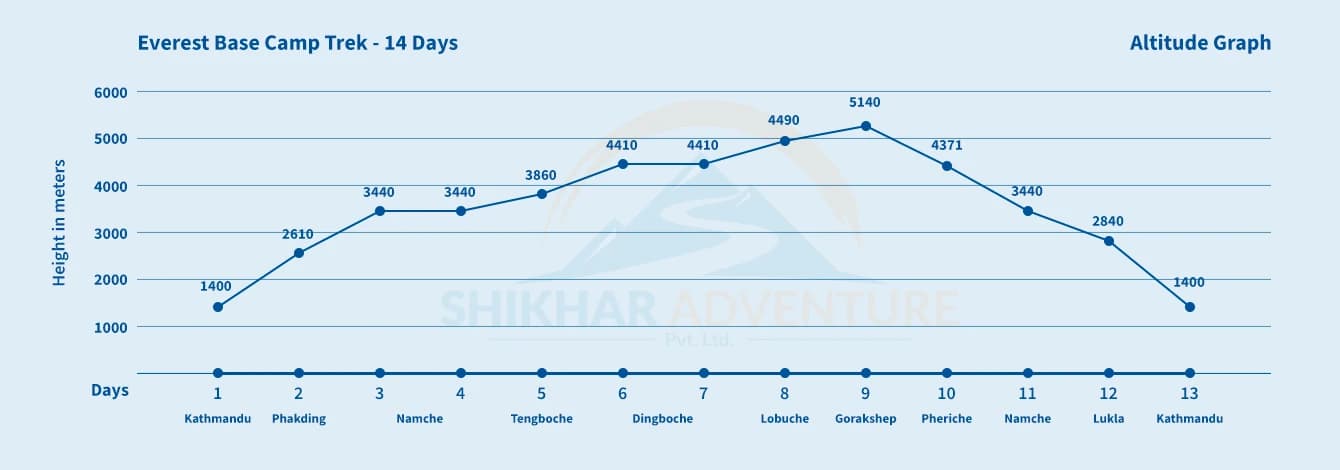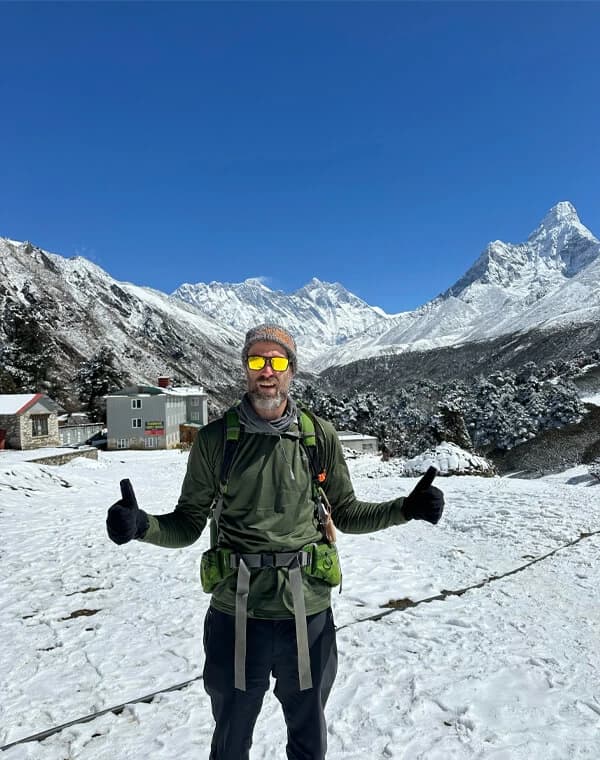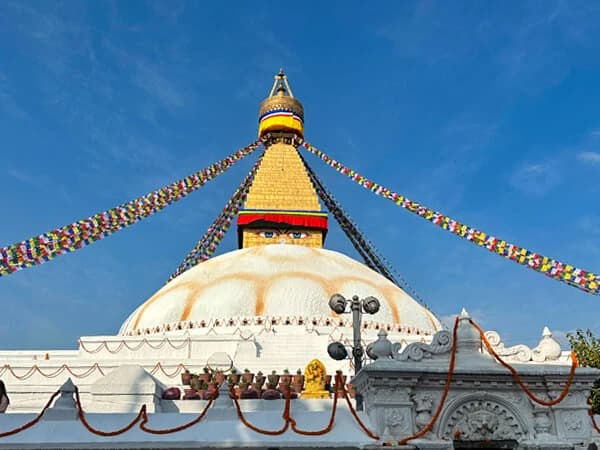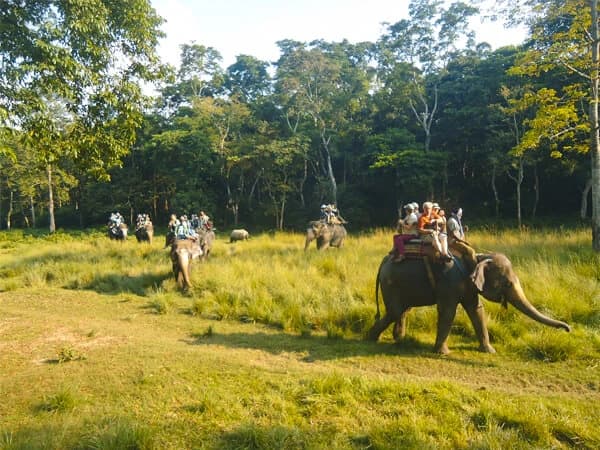Key Highlights of Everest Base Camp Trek
- Take a breathtaking flight to Lukla (2,840m), the entrance to Everest.
- Acclimatize and explore Namche Bazaar (3,440m), the lively Sherpa capital.
- The sacred Tengboche Monastery (3,867m) with a background of Himalayan peaks.
- Panoramic views of Everest and others from Kala Patthar (5,545m).
- Walk right through the UNESCO-listed Sagarmatha National Park—a home for varied flora and fauna.
- Cross glacial rivers over suspension bridges against stunning backdrops.
- Immerse yourself in traditional Sherpa culture within quiet villages like Phakding and Pangboche.
- Stand at the foot of the tallest mountain at Everest Base Camp (5,364m).
Trip Overview
Everest Base Camp Trek is the perfect mixture of stunning scenery of the Himalayas, hospitality, unique culture & lifestyle and at the top “ADVENTURE”.
Mount Everest base camp, around 5,364 meters above sea level, world’s most opportunistic & iconic trekking route, taking 14 days long trek to experience heaven, long but surreal, long but full of adventure, scenery, culture & biodiversity.
Nepal, where you truly experience heaven, a land of Himalayas leaves you with nothing but a memory to hold back for a lifetime. Who doesn’t know about Mt. Everest base camp or Sagarmatha base camp, if you don’t you are really missing out on something.
Before taking the surreal experience of EBC, isn't it exciting to have a little fun and adventure? Well, the flight to Lukla is often called the world’s most dangerous airport in the Khumbu region 2,860 meters above sea level, and serves as the gateway & starting point for Everest Base Camp.
The trail through the culture of the Sherpa community, their village, scenery of peaks like Ama Dablam, Lhotse, and Nuptse and dense pine forest, isn’t it exciting to get connected with mother nature?
The trek stops at Namche Bazaar (3,440 meters), the largest town in Khumbu region holds marketplace, culture & lifestyles, viewpoints that amaze every trekker.
Tengboche (5- 6 hours) trek from Namche Bazar (3,867 meters) highlights tengboche monastery & serenity as well as the route includes a steep descent to the Dudh Koshi River followed by a challenging uphill climb, if you love not only adventure but challenges, EBC have your back.
The Everest base camp trek reaches its peak with an ascent to Kala Patthar 5,545 meters. Indeed, it is considered as a sunrise & sunset point having panoramic Himalayan Scenery & best view of Everest. More than just a physical adventure, the EBC trek is a blend of natural beauty, adventure, and deep cultural encounters.
Lukla Flight Information
During the busy trekking seasons, March to May and late September to November, flights to Lukla operate from Manthali Airport instead of Kathmandu. This is because Tribhuvan International Airport gets very busy with high demand and air traffic.
Manthali is about 130 km from Kathmandu. It takes about 4 to 5 hours to drive to airport there. There are some bumps in the road and it winds around a lot.
We leave Kathmandu around 2:00 AM to get to the early planes. This gives you enough time to get to Manthali, check in, and get on the plane.
We have to get up early, but that's part of the adventure. You get to travel through the quiet night and watch the first light of day over the hills before flying into the Himalayas.


